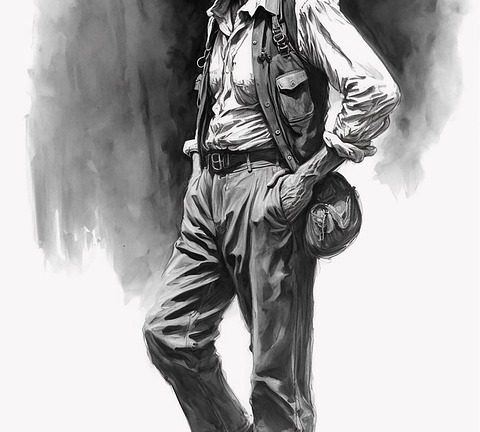drawing is a magical doorway into the world of creativity, allowing kids to express themselves and bring their ideas to life. Whether they’re doodling on the back of a napkin or working on their next masterpiece, nurturing creativity through drawing can be incredibly rewarding. Here, we’ll explore some fun techniques that can help kids unleash their imagination and make drawing an enjoyable activity.
1. Doodle Madness
What It Is:
Doodling is a free-form drawing technique that encourages spontaneous creativity. It’s all about letting go of perfection and just having fun!
How to Do It:
- Provide kids with a blank sheet of paper or a sketchbook.
- Set a timer for five minutes and tell them to doodle anything that comes to mind—shapes, patterns, or little creatures.
- After the time is up, they can choose a doodle and develop it into a larger drawing or story.
Why It’s Fun:
Doodling breaks the rules and focuses on the process rather than the outcome. Kids can find joy in the simple act of making marks on paper!
2. Nature Collage drawing
What It Is:
Combining drawing with natural elements helps kids connect with the outdoors while sparking their imagination.
How to Do It:
- Go on a nature walk and collect leaves, flowers, twigs, or pebbles.
- Once back home, use these items as inspiration for a drawing.
- Kids can arrange the items on paper as they wish and draw around them, creating a beautiful landscape or a garden scene.
Why It’s Fun:
This technique encourages observation and creativity, allowing kids to incorporate their surroundings into their artwork.
3. Texture Exploration
What It Is:
Playing with textures can enhance a drawing, making it feel more dynamic and interesting.
How to Do It:
- Provide various materials like textured fabric, bubble wrap, or sandpaper.
- Kids can press the materials onto paper with crayons, paint, or ink, creating unique textures.
- They can then add drawings that interact with the textures, like a furry creature on a textured surface.
Why It’s Fun:
Exploring different textures adds sensory experiences to the drawing process, making it more engaging and tactile.
4. Storytelling Through drawing
What It Is:
Encouraging kids to create illustrations that tell a story helps improve their narrative skills and boosts creativity.
How to Do It:
- Start with a simple story prompt, such as "a day at the magical zoo" or "an adventure on a pirate ship."
- Ask kids to sketch scenes from the story, adding characters, dialogue bubbles, or captions.
- They can then share their drawings with friends or family, giving life to their narrative.
Why It’s Fun:
This technique not only fosters creativity but also invites kids to think critically about character development and plot.
5. Color Your World
What It Is:
Experimenting with colors can significantly enhance the visual impact of drawings.
How to Do It:
- Encourage kids to use unconventional colors for traditional objects (like blue trees or pink elephants).
- Provide them with a variety of coloring tools—crayons, markers, watercolors—and let them experiment without worrying about "rules."
- You can even have them create a color wheel with their favorite colors and use it as inspiration.
Why It’s Fun:
Playing with colors can transform mundane drawings into vibrant works of art, allowing kids to express their unique perspectives.
6. Collaborative drawing
What It Is:
drawing together with friends or family fosters teamwork and can lead to surprisingly creative results.
How to Do It:
- Sit in a circle with large paper or a whiteboard.
- Each person takes turns drawing for a minute, then passes the paper to the next person, who adds their own touch.
- After several rounds, review the collaborative drawing and discuss the different ideas everyone contributed.
Why It’s Fun:
This technique not only encourages collaboration but also teaches kids to appreciate others’ perspectives and creativity.
Conclusion
drawing is a fantastic way for kids to explore their imagination and express their thoughts and feelings. By incorporating these fun techniques, children can discover new ways to create and innovate, allowing their artistic journey to flourish. So, grab some paper and art supplies, and let the creativity flow—who knows what incredible things your child can create!
